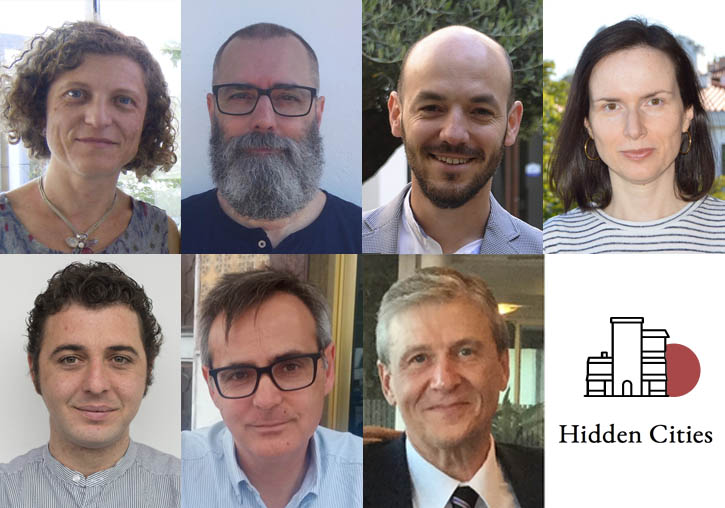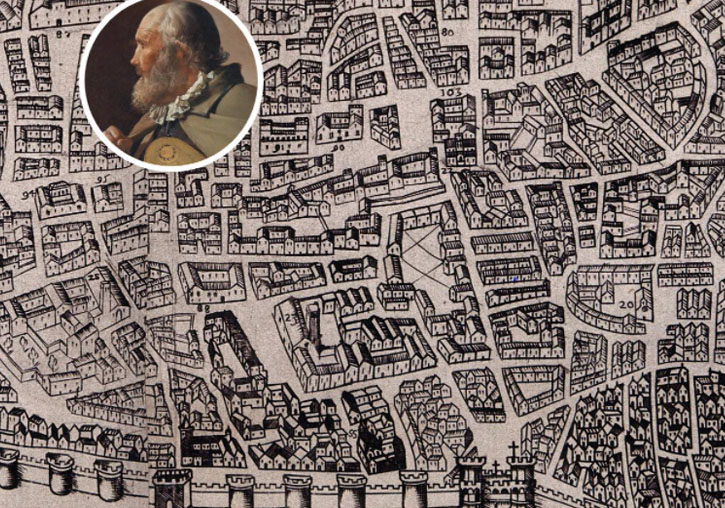A dramatised mobile application revives the Valencia of the Revolt of the Brotherhoods through heritage
- Scientific Culture and Innovation Unit
- November 19th, 2020

An international team of specialists in Modern History has created the Hidden Cities project, which, with a mobile application, reconstructs the past of five European cities, including Valencia, from a geolocated historical map. The project, which is presented today Thursday and is free to download for iOS and Android, has been developed in Spain by the University of Valencia. Discover the daily life of the city in 1524, two years after the end of the Revolt of the Brotherhoods, with stories of its protagonists represented by professional actresses and actors.
“The Hidden Valencia mobile application allows to enter a key event in the history of the city of Valencia, such as the Revolt of the Brotherhoods in an innovative way, combining historical research and the use of digital tools”, highlights Blanca Llanes, researcher at the University of Valencia, and Juan Gomis, professor at the Catholic University of Valencia, members of the Public Renaissance: Urban Cultures of Public Space between Early Modern Europe and the Present project, led by the University of Exeter (United Kingdom).
The connecting link of these stories is that they are related to the places that are visited. The Hidden Valencia application, and specifically the “Valencia of the Brotherhoods” tour, invites you to immerse yourself in the dramatic events of the Revolt of the Brotherhoods (1519-1522), through a walk through the Serranos Towers, the Old City Hall building (located in the garden attached to the current Palau de la Generalitat and demolished in 1860), the Door of the Apostles of the Cathedral, the Archbishop’s Palace, the Santa Catalina Church, the Silk Market and the Market Square.
This confrontation between the ruling classes of the city and the town, organised in labour unions, is explained in the application of the hand of Josep, a blind member of the Vera Creu brotherhood, founded in 1329, who recites prayers, at the same time who sings and tells stories in the streets of the city in exchange for alms. Josep, while preparing a literary composition on the Revolt of the Brotherhoods, will narrate stories of its protagonists, ranging from guild craftsmen to nobles and royal authorities and where the reasons for the confrontation will be known.
The geolocated historical map allows you to jump from one space to another in the city, and connect each place with stories from the daily life of the period. Thus, the Valencia Market Square allows it to be presented as the place with the gallows, in which some of the Brotherhoods leaders were punished. Viceroy Diego Hurtado de Mendoza entered the Serranos Towers in two moments. In one he was acclaimed and in the other he changed its route, a fact that presents this ceremonial door as a stage for royal and triumphal entries, and at the same time a space for contestation.
The church of Santa Catalina is also presented as a place that Josep must have frequented, since the doors of the temples were the space where the blind were allowed to exercise their trade. Regarding the Old City Hall building, the leaders of the revolution were able to control the government of the city in 1520, as Josep tells us. In addition, the Door of the Apostles of the Cathedral represents the role of the Sant Jordi (or Centenar de la Ploma) Brotherhood, to which Joan Llorens, ideological leader of the revolt, belonged, and which represents the religious sentiment that permeated the political body of the Brothers, the Board of Thirteen, in the image and likeness of Christ and the twelve apostles.
In addition, at each point of the route, users can listen to the Discover more audio, prepared by the project’s specialist staff, and learn more about the objects associated with each place, such as drinking jugs, shields and coats of arms, or pamphlets, among others.
“Hidden Cities applications take advantage of the daily consumption technology of smartphones to offer innovative experiences of public history and invite us to delve into the stories and uses of public space in the cities we inhabit. With the collaboration between universities and museums, the narrated stories connect public spaces with their material culture in an attractive and entertaining way”, highlighted Fabrizio Nevola (University of Exeter), researcher who leads the project.
Professor Mónica Bolufer Peruga (main researcher), researcher Blanca Llanes Parra, and professors Pablo Pérez García, Juan Francisco Pardo Molero, Jorge A. Catalá participate in the Spanish part of this research team and on behalf of the University of Valencia. Sanz and Daniel Muñoz Navarro. Professor Juan Gomis Coloma (Catholic University of Valencia) also participates. The project is also funded by the Ministry of Science and Innovation of Spain (PCI2019-103749).
Mobile apps
Parallel to the city of Valencia, this project was also developed at different times in the years between 1495 and 1686 in the European cities of Deventer (Netherlands), Hamburg (Germany), Exeter (United Kingdom) and Trento (Italy).
The mobile applications of this project are based on the Hidden Florence model (2019) and are the result of a three-year collaborative research project (2019-2022): Public Renaissance: Urban Cultures of Public Space between Early Modern Europe and the Present, funded by the Humanities in European Research Area (HERA) network. The applications have been prepared by research staff from the Universities of Exeter; Groningen; the Italo-Germanic Historical Institute (Bruno Kessler Foundation); the University of Valencia; the Catholic University of Valencia; and the Friedrich-Alexander University of Erlangen-Nuremberg. These apps have been developed by the digital technology company Calvium.
Download the apps:
- App Store para iOS (click here).
- Google Play para Android (click here).
Photo captions:
- Representation of Josep, the blind, on the map of Valencia. (Map of Antonio Mancelli's Valencia, 1608, Historical Museum of Valencia. Josep: Georges de La Tour, "Cec tocant la viola de roda", 1620-1630.© Madrid, El Prado Museum).


















